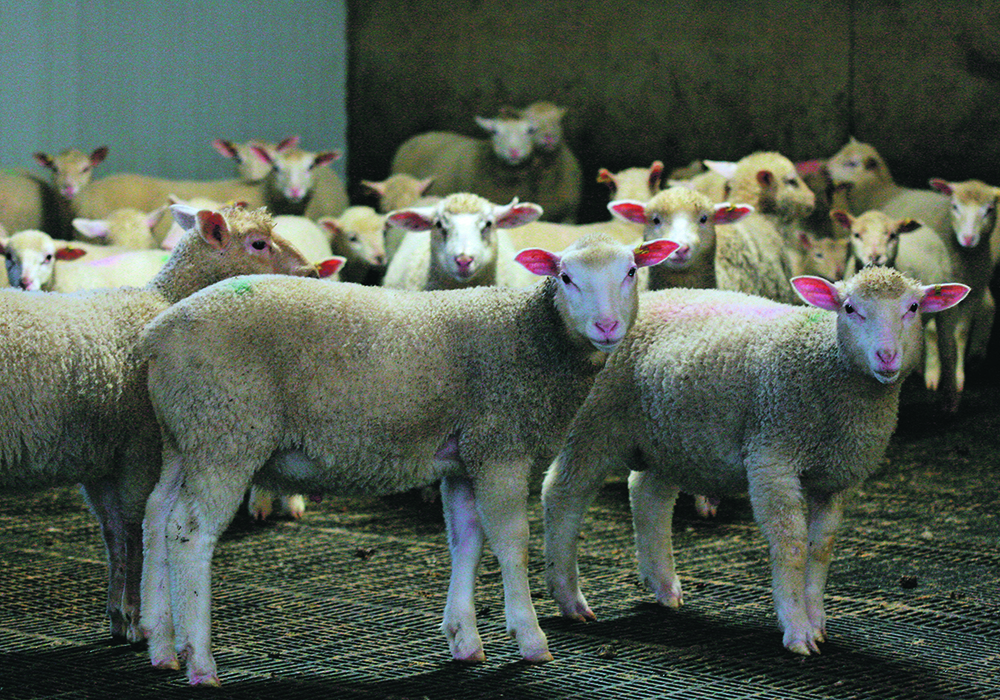Last March, Owen Gentes was worried about demand for lamb.
COVID-19 had become the only story in the world, and the pandemic was shutting down large parts of Canada’s economy.
As a result, Gentes assumed lamb consumption would dry up.
But the opposite happened.
Lamb prices were strong last summer and exploded in the fall, reaching record levels.
Prices for heavy, ready-for-slaughter lambs were hovering above $2 per pound last July. By December they hit $2.75 per lb., based on data from the Saskatchewan Sheep Development Board.
Read Also

Saskatchewan dairy farm breeds international champion
A Saskatchewan bred cow made history at the 2025 World Dairy Expo in Madison, Wisconsin, when she was named grand champion in the five-year-old Holstein class.
Prices for feeder lambs, 80 lb. or under, have been even stronger. They jumped from $2.60 per lb. in October to $3.60 per lb. in February.
“The prices we saw this year, we’ve never seen before. It wasn’t expected,” said Gentes, a sheep producer from Battleford, Sask., and chair of the Saskatchewan Sheep Development Board.
“If I can sell a 115 lb. lamb (slaughter weight) for anything over $2, I’m happy…. When you see $2.60 that’s pretty nice money. You’re getting over $300 for that heavy lamb.”
A price increase in the fall is unusual because that’s when most lambs go to market in Western Canada. A price chart from the Alberta Lamb Producers shows that prices normally decline from September to December. This year, prices went up.
Demand for lamb began to spike last spring and early summer, as more Canadians were eating at home.
Ethnic groups that traditionally eat lamb, including Muslims, started preparing more lamb at home, said Gordon Schroeder, Sask. Sheep executive director.
Plus, millennials and other young consumers weren’t spending money on restaurant meals. Instead, they were trying new recipes at home, like lamb chops.
“In July, we had truck after truck (of lambs) heading east, trying to fill the market (demand),” Schroeder said.
While that was happening, more sheep producers on the Prairies sold their lambs in the summer because of dry pasture conditions, Gentes said.
By September, there was a shortage of lambs and prices began to climb.
“Everybody thought there would be more lambs and more lambs, but lambs had been marketed and slaughtered earlier,” Schroeder said.
“There were contracts in place. Buyers had to fill their supply. So, they just paid what they had to.”
As of late February, heavy lambs were still selling at $2.80 per lb. and Gentes is hopeful that the robust prices will stick around.
Most of the new lambs in Western Canada are born in the spring and aren’t ready for market until late summer or fall. There could be a shortfall of lambs until the new crop hits the market.
In the bigger picture, Canada needs more sheep producers.
Right now, Canadian farmers produce only 40 percent of the lamb consumed in the country. The rest is imported.
Sheep numbers aren’t expected to rise in 2021 because many producers culled a higher than usual percentage of their herd to take advantage of the extraordinary prices.
In the years ahead, Canada lamb production could increase because young farmers are interested in sheep production.
Schroeder teaches a Getting Started in Sheep course in the spring and the fall.
“(The) maximum is 25 students per class and they are full. I’m turning people away,” he said.
“We’re doing one this weekend and it’s right full.”
















